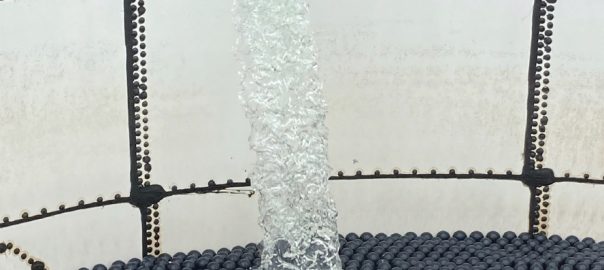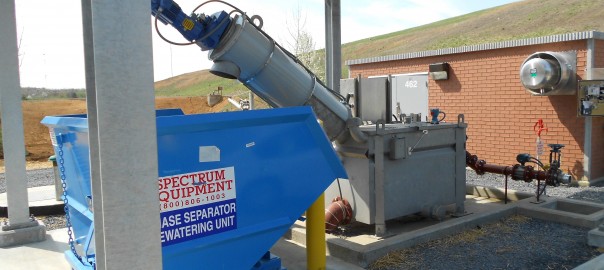
Every household in the U.S. uses an average of 300 gallons per day. The majority of water usage involves flushing toilets, washing hands, and taking showers. You also have businesses using water. Almost half of the freshwater withdrawals in the U.S. are for thermoelectric power and irrigation systems. Public use accounts for about 12%.
In 2013, only eight states in the U.S. reported water shortages as being unlikely. Montana reported a statewide water shortage was likely in the next decade. Two dozen states said there were likely to be regional shortages. Fifteen states reported feeling that local shortages were likely.
As the population grows and water consumption continues, the risk of water shortages is very likely. In fact, 2021 saw the federal government declaring a water shortage on the Colorado River. Immediate changes to water policies were discussed and reductions were placed for Arizona and Nevada.
Every measure that municipalities and districts can take to conserve water is important. That’s where a closed-loop wastewater system comes in. Instead of drawing water from lakes, rivers, and other water sources, water enters a circular system where it is treated to meet water quality requirements and reused. Learn more about closed-loop wastewater systems and see if you could make it work well for your needs.
How a Closed-Loop Wastewater System Works
When you have a closed-loop system, you reuse the water that’s necessary for flushing toilets, washing hands and equipment, and manufacturing or producing components, foods, etc. Water is collected and sent to the wastewater equipment to be screened, cleaned, aerated, cleaned more, and filtered. It may be treated with chemicals to remove bacteria.
Once it meets the required specifications, it’s sent back to tanks where it can be reused. A closed-loop wastewater system can’t completely eliminate your need for water from your district. There’s always water loss to evaporation. But, this type of system can drastically reduce the amount of water needed from municipal water supplies.
What Industries Benefit From Closed-Loop Wastewater Treatment?
How can businesses use a closed-loop wastewater treatment system? Here are different areas where these systems can be incredibly helpful.
- Breweries
Breweries use a lot of water. There’s the water needed to make the beer, rinse the grains, and clean the equipment.
Several breweries have installed closed-loop water treatment plants to reduce the amount of wastewater that’s sent to sewers. Denmark’s Carlsberg is one of them.
Wastewater from the brewing process is treated in an on-site wastewater treatment plant. The biogas produced from wastewater treatment is used to heat the brewery. The cleaned wastewater is reused for cleaning. Instead of putting water down the drain, the brewery reuses almost every drop.
- Car Washes
Have you ever taken your car to an automatic car wash? Do you own a car wash? Studies have been completed on the amount of water used during a car wash.
With self-serve car washes, around 12 gallons are used per vehicle. A conveyor system uses about 44 gallons, while an in-bay car wash uses the most at 72.5 gallons on average. A closed-loop system is a great way for car washes to recapture the dirty water, clean it, and use it to wash more cars.
- Chip Fab
Millions of gallons of water are used every day in a large chip fabrication plant. Some of the nation’s largest chip fabs have started setting up closed-loop systems to reuse water. Others, such as Intel, have established systems that reduce the amount of water they use by over 40% and keep making improvements.
- Dairy Plants
In 2018, Hiland Dairy was recognized for its closed-loop initiative. The plant added an on-site wastewater treatment facility to process the whey wastewater. The lagoons the plant added can treat upwards of 250,000 gallons per day. The whey that’s separated from the wastewater is used as fertilizer for its feed crops.
- Distilleries
To make spirits, water is needed. It’s estimated that almost 10 gallons of water are used to make one liter of whatever spirit is being distilled. Gallons of cold water running over condensers ends up being incredibly wasteful.
To stop this waste, Laws Whiskey House in Colorado established a closed-loop system where water is recycled and cooled for reuse. This saves about three gallons of water per liter bottle of whiskey.
- Hotels/Resorts
A hotel or resort goes through a lot of water. Guest baths and showers, toilet usage, and kitchens use thousands of gallons of water each day. Plus, you have the laundry room where sheets and towels are laundered every day.
A closed-loop wastewater system can make a big difference in a hotel or resort’s water consumption. Water is filtered to remove lint and toilet paper. It then goes through aeration and cleaning. Solids are removed and composted or removed to waste facilities. Once the water is treated and meets required standards, the water is reused.
- Laundromats
A closed-loop wastewater treatment system can reduce a laundromat’s water consumption by as much as 80%. Once a load of laundry is completed, the wastewater is screened and sent into a tank where it is filtered to remove lint and grit from dirt. After going through additional cleaning steps and filters, it can go into water tanks to be reused to wash another load of laundry for someone else.
- Restaurants
In 2021, a company announced they’d created The Endless Sink, a stand-alone closed-loop wastewater system that cleans the water used to wash dishes again and again without needing to draw much additional water.
A closed-loop system is great for large kitchens that serve hundreds of diners. Oils and food particles are removed. The remaining soapy water is filtered and purified to remove all bacteria. From there, it can be used again at sinks or in dishwashers.
- Rest Stops
Interstate rest stops see thousands of visitors each day. Those visitors are there for bathroom breaks and to stretch their legs. Imagine how much water is used every time a toilet flushes and hands are washed.
Vermont is home to an amazing closed-loop wastewater system that serves thousands of people every day. Instead of overworking the septic system in this rural area, a closed-loop system cleans the water for reuse. Set right off the interstate, The Living Machine is set within a large glass solarium. A series of tanks contain plants, aquatic insects, snails, and worms.
When visitors stop to use the toilets, they flush the water and it goes into the septic system where solids settle and the rest of the wastewater travels to treatment tanks where aeration occurs. After aeration, the vegetation, animals, and insects do their part to complete the cleaning process.
At this point, the cleaned water returns to the toilets and sinks in the bathrooms where it’s reused and the cycle continues. Signs tell visitors about the process and provide notice that the water is not meant to be consumed.
It’s Time to Consider a Closed-Loop Wastewater System
Your company goes through thousands of gallons of water every day. It’s time to consider how you can lower your impact on the environment. What steps can you take to reduce the amount of water you’re using to wash equipment, process foods, or other processes that require a lot of water?
Work with the engineers at Lakeside Equipment on the closed-loop wastewater system your business needs. Whether you need a large system or a smaller one, we can help you. Since 1928, we’ve specialized in water treatment for industrial and municipal settings. Call us to learn more.





